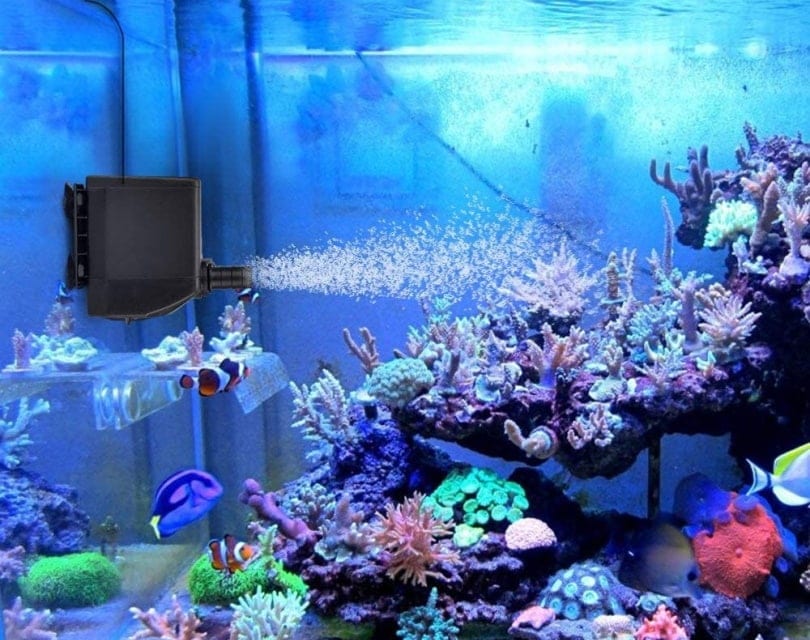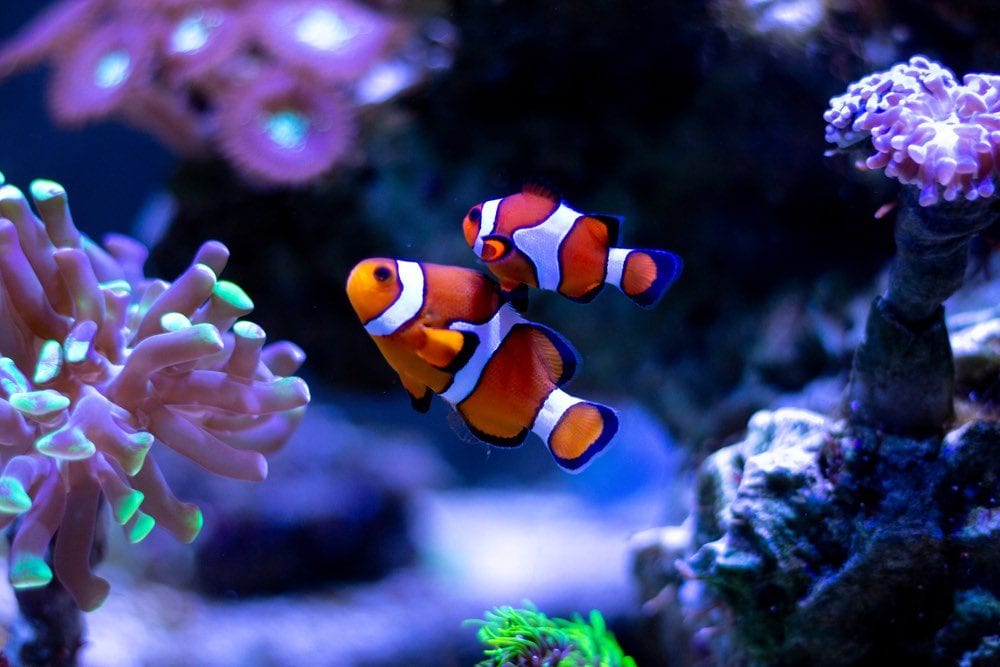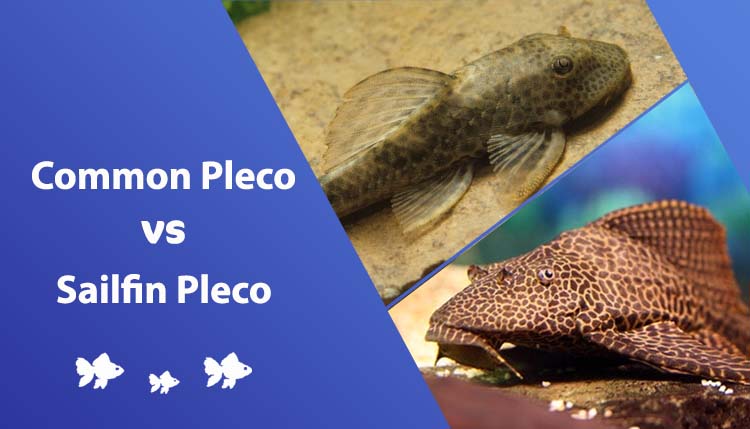Aquarium Plant Problems: Signs & Diagnosis

Updated on
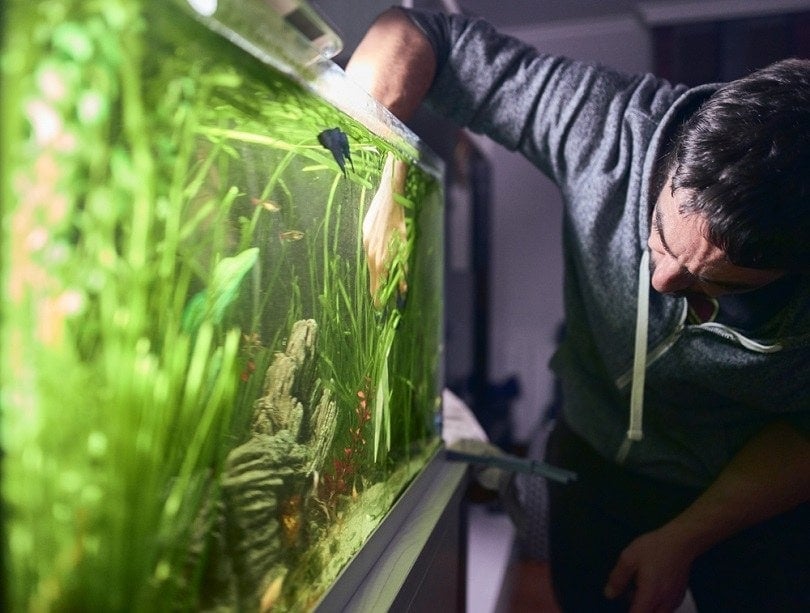
Aquarists take pride in their plants’ thriving conditions and it can be a bit of a shock to see an unidentified problem among your aquatic plants. Live aquarium plants give the aquarium a lively look and feel. To preserve the plants, acting right away will produce the most effective results.
Aquarium plants are prone to developing a variety of problems for aquascape hobbyists. Much like fish, plants can fall host to infections, or even a deadly disease that can wipe out your entire aquarium plant collection.
Keeping your aquatic plants in their ideal conditions and with frequent maintenance will make your plants stronger and able to withstand many problems. It may even lessen their risk for developing any issue at all.
Even the most well-maintained aquatic plant is at risk of several diseases. It therefore makes it essential to treat and diagnose the problem right away to avoid spreading the disease further. Fish and invertebrates can pick up fungal and bacterial infections from your plant or vice versa.
Common Aquarium Plant Problems (Signs & Diagnosis)
There are a range of potential plant problems, some of which are easy to treat, whereas others may be costly and difficult to treat.
To make it easier for you, we have made a list of common plant symptoms and along with a diagnosis.
Infections
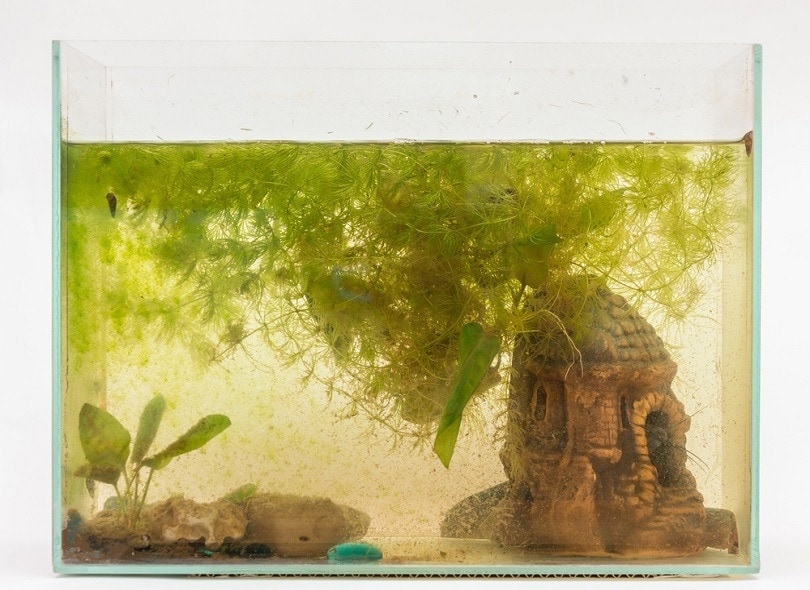
| Signs: | White, fluffy growths on the plant. The small fur-like growths can be long or short. The growths may take on a white and grey appearance due to trapped dirt. Stringlike webbing may be visible around the plant. |
| Diagnosis: | This is a fungal or bacterial infection. The plant should be moved to a quarantine tank and treated. Fungal and bacterial infections spread rapidly from plant to plant. These infections present themselves in an aquarium from newly added infected fish or plants. Sometimes unclean water conditions are a factor. |
Growth and Development

| Signs: | The plant is not growing. Slow to no growth has presented itself since buying the aquatic plant. A few leaves may look discoloured or wilted. |
| Diagnosis: | It can be from a deficiency in either CO2, poor lighting, or a lack of nutrients in the water. Researching and supplying the plants with their ideal growth requirements will grow your plant out. However, some plants naturally grow at a slow rate and are not a cause of concern. |
| Signs: | The plant has brittle leaves that look wilted and dried out despite the plants being surrounded by water. |
| Diagnosis: | The plant is lacking iron. Iron supplements should be given as fertilizer. |
Discoloration

| Signs: | The plant may begin developing brown or black leaves rapidly. The leaves will look wilted, and some will look droopy. Healthy green plants that start developing discoloured leaves are an indication that something is not right. |
| Diagnosis: | High phosphate levels in an aquarium lead to dark and dying leaves. |
| Signs: | Flourishing green leaves start to turn yellow. The yellow may be in patches or the full leaf. Some browning may be seen around the yellow. |
| Diagnosis: | The plant is receiving inadequate light levels. Yellow leaves are an indication of low lighting |
| Signs: | The plant has multiple leaves turning an unusual grey color. This discoloration can be shown with spotting, patches, or the entire leaf. The entire leaf may start to melt away. |
| Diagnosis: | The plant is receiving low amounts of CO2. Slowly increase the levels of co2 to help conquer this problem. |
Tank & Water Conditions

| Signs: | The plant has stopped growing before reaching its full potential and is starting to die off. The plant may come to a standstill in growth and slowly die off. |
| Diagnosis: | The temperature is the main problem when it comes to ceased growth. The plant cannot photosynthesise properly to provide itself with food to encourage growth. |
| Signs: | Small pin holes develop in the leaves. The holes gradually get larger, and the plant will start to die off. Minor color change can occur around the holes. |
| Diagnosis: | High levels of nitrates cause a condition known as Cryptocoryne rot. It should be treated immediately. Doing a series of large water changes can lower your aquarium’s nitrates. |
Roots and Stems
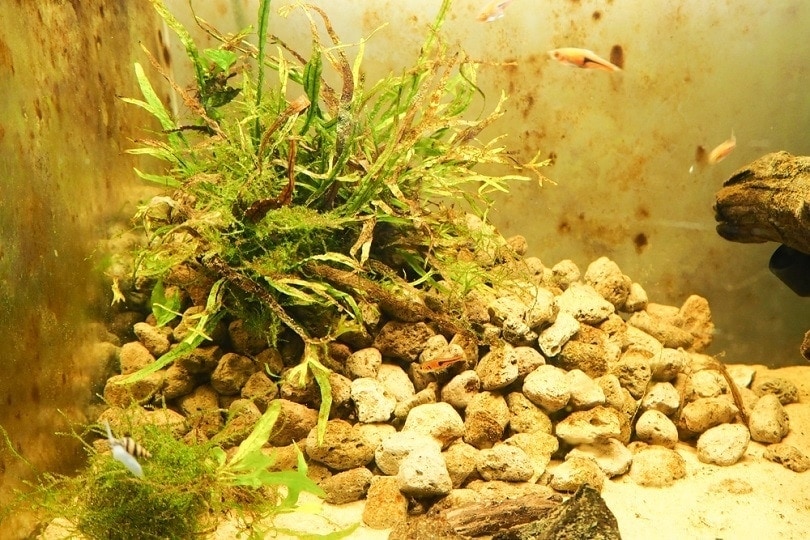
| Signs: | The plant’s growth has ceased. The roots are turning black and decaying. The roots will appear mushy and have the texture of jelly. |
| Diagnosis: | The soil is not ideal for the type of plant. It may be too compact or to lose. If the plant has been in the substrate for a long period, the substrate will not hold as much nutrients as it used to. |
| Signs: | The stems of the plant are turning black. The stem will hang limp and not be able to support the additional stems and leaves. |
| Diagnosis: | The plant is not receiving enough nutrients. This can be due to poor fertilizations, aquarium plants competing for nutrients or the water not holding enough nutrients for the plant to sustain itself. |
How to Keep Aquarium Plants Healthy
Keeping your plants healthy is the best measure against aquarium plant problems. Each plant has their own requirements that should be met for them to be healthy.
- Research the type of aquarium plant you keep and ensure you meet all the right requirements.
- Add aquarium fertilizers to prevent deficiencies.
- Keep the soil loose for rooting.
- Keep the right type of aquarium plant. Do not keep a freshwater plant in a saltwater aquarium.
- Set up a schedule to do a health check on each plant.
- Use reverse osmosis water if your tap water is not ideal for the type of plant you keep.
How to Treat Common Aquatic Plant Problems
| Diagnosis | Treatment |
| Fungal or Bacterial Infection | Place the plant in a quarantine tank. Add aquarium fungal and bacterial medication into the water. Remove infected plants to the quarantine tank once you notice signs to avoid spreading. Depending on the cause of the infection, your inhabitants may need to be treated too.
|
| Growth and Development | Ensure the plant is receiving the necessary nutrients to grow and remain healthy. All aquarium plants should grow within the first few months you get them. A plant failing to produce new shoots is developing poorly. Adding aquatic plant fertilizers into the water or substrate weekly will trigger growth. |
| Discoloration and Deficiencies | Add the necessary supplements to the water to increase the type of mineral the aquarium plant is lacking. |
| Conditions
|
Ensure the temperature is kept in the plants recommended dosage. Regularly test the water parameters and ensure there is no ammonia, nitrite, or nitrate spike. Complete regular water changes to ensure cleanliness.
|
| Roots and Stems | Add root tabs to the substrate to establish a healthy rooting system. Add a 2–3-inch layer of substrate for the plant to root properly. |
How Can Fish Tell Us When There Is a Problem With Aquarium Plants?
Sometimes fish in the aquarium can indicate when there is a problem with the water conditions.
- High carbon dioxide levels: The fish will be listless and float towards the top of the aquarium desperately gasping for air. Bottom dwellers will be the first to indicate the problem as they will stay near the surface where there is more oxygen. Plants will be the last to show symptoms.
- Low oxygen levels: Lethargy and random gasps of air at the surface in the span of an hour can indicate oxygen depletion. Poor surface movement is usually the cause. Overcrowding the aquarium causes a competition for oxygen availability.
Plant Problems That Impact Wildlife and Environmental Laws
Plants may carry a foreign species that can clog and overpopulate the aquarium and bodies of water. This will lead to an extreme environmental and wildlife crisis if the foreign species are released into waterways. An example is the Marimo Moss ball potentially carrying zebra mussels after international shipping.
Always check your local news for updates on potential threats to not only your aquarium but to your entire country’s expense. Contact your local wildlife organisation for disposal information (never dispose of foreign species without the help of a professional).
Conclusion
Once you have established the cause of your aquarium plants poor health, you can begin to treat the problem. Most of the problems aquatic plants get are easy to treat and manage, but you will need the help of chemicals or equipment. Nursing an aquatic plant back to health is rewarding! We hope this article has helped you identify the root (pun intended!) of the problem.
Check out some of our top trending posts:
Featured Image Credit: Enadan, Shutterstock

